The Spider Goddess Read online
A PANDORA ENGLISH NOVEL
FROM THE BESTSELLING AUTHOR OF
THE BLOOD COUNTESS
It’s been two months since Pandora English left her small hometown to live with her mysterious great-aunt in a haunted mansion in Spektor – the fog-wreathed suburb of Manhattan that doesn’t appear on any map.
With the help of Great-Aunt Celia and the handsome – but dead – Lieutenant Luke, Pandora is beginning to understand that she is heir to a great gift from the Lucasta family – a gift that comes with a frightening responsibility.
And New York needs Pandora’s special gifts.
There is a new designer in town, and her ambitions extend far beyond taking over the fashion world one knit at a time.
CONTENTS
Cover
Blurb
Dedication
Chapter 1
Chapter 2
Chapter 3
Chapter 4
Chapter 5
Chapter 6
Chapter 7
Chapter 8
Chapter 9
Chapter 10
Chapter 11
Chapter 12
Chapter 13
Chapter 14
Chapter 15
Chapter 16
Chapter 17
Chapter 18
Chapter 19
Chapter 20
Chapter 21
Chapter 22
Acknowledgements
About the Author
Also by Tara Moss
Copyright
For Sapphira Jane
I looked at the fashion model and reassured myself she wasn’t dead.
She was a stunning blonde, heavily made up, and she sat in the centre of a large, white-walled and brightly lit studio that smelled of fresh paint and cosmetics, and faintly of burning lights. She had something of the skinniness, the eerily perfect skin. Maybe it was something in the eyes that made me wonder? But no . . . The sun was up. She was definitely alive, I decided.
It was the second time I’d come to that conclusion in as many hours.
‘Get what’s-her-name to hurry up and bring that coffee over here.’
The photographer spoke, breaking me from my analysis. He was a lithe and aloof man, dressed in fashionable jeans and a skin-tight T-shirt. He was so skinny I’d wondered about him, too.
He was speaking to me. What’s-her-name. Well, technically he hadn’t spoken to me, but spoken to his assistant about me. All day, neither of them had really acknowledged my existence, let alone spoken directly to me, but this was not a particularly new experience.
My name’s Pandora English. I’m not rich, famous or powerful, and, as I’ve discovered, people don’t tend to talk to you in New York unless you are one of those three things. I’m from a small, unfashionable place called Gretchenville (population 3999 with my recent, unprecedented departure). When I was growing up I never imagined I would end up in New York, let alone on a photo shoot for a fashion magazine – the kind of magazine I’d spent years perusing as a girl.
So here I was watching my first real fashion shoot. And, to my surprise, it wasn’t all that exciting. Go figure.
I found I was less interested in the designer fashion and expensive makeup and all the things I’d coveted in my unglamorous hometown, and more in whether the people around me were human. My recent experiences in New York had made me wonder about such things. In the past few months, a whole lot had changed for me. I’d moved from my small town, got my first job in publishing, been on my first real date, and met some undead folks. The latter had been particularly eye-opening. Life and death, and the states in between, were a whole lot more complicated than I ever could have imagined. And considering what my late father had called my ‘overactive imagination’, that was really saying something.
‘Hello? Coffee?’ The photographer spoke in a quick, impatient voice.
I walked up to him, balancing the tray of hot drinks I’d been sent to fetch from a cafe on the cold SoHo street outside. ‘Um, here is your coffee,’ I said and smiled nervously, holding out the tray.
The assistant only turned his head my way momentarily, he was too busy holding up a big silver reflective disc at an uncomfortable angle. The photographer was back to clicking the shutter of his camera busily.
Again, I looked over at the model he was photographing in the apex of lights. There were so many lights pointed at her that I wasn’t sure how she kept her eyes open. Every couple of seconds she changed her expression ever so slightly – from sultry to pouting, and then back to sultry again. The process seemed kind of mechanical. It wasn’t how it looked in the magazines.
I looked down at my hands. They were bare and they looked a tad blue. It was winter in New York and it had been literally freezing outside. My tightly wrapped wool scarf had fallen free of one shoulder, exposing my cold neck, which took happily to the heat of the overblown lights around me. I looked forward to a sip of the nice hot tea I’d ordered for myself. A hand reached out and snatched one of the coffees. It was the photographer. He took a sip and frowned. ‘Is this a non-fat latte?’ he demanded to no one in particular, though I was standing right there.
If there is one thing I have learned about the fashion industry in the past two months, it is that no one drinks full fat milk. Also, they have some perplexing issue with carbohydrates, which, as far as I know, are in most foods anyway. They seem to believe that full fat milk and carbohydrates are the big bad. If only they knew about the big bad things I knew about.
‘Yes, it is non-fat,’ I confirmed, and resisted reminding him of my name. It wasn’t that hard to remember, after all, considering it happened to be the same name as the magazine paying his bill. This shoot was for Pandora, the glossy fashion mag I worked for.
How I came to be hired by Pandora magazine is an odd story. I came to New York at the invitation of my great-aunt Celia, and, well . . . she’s kind of different. She has an uncanny knack for knowing things – like when there is an opening for an assistant at a fashion magazine, and just what I should wear to get the job. Don’t ask me how. She just knows things. It’s something that runs in the family, I’m discovering.
‘Just one more shot,’ the photographer said, after a sip of coffee.
At this, the model cast her eyes to the ground and raised an eyebrow. I was the only one who saw her expression, or detected her resigned sigh. I knew why she was impatient. We’d heard that line from the photographer at least three times in the past hour, and the fetching of fresh coffee didn’t really denote an end to the shoot, either. The sun would be going down soon and I probably wasn’t the only one eager to get home to a warm bath and a hot meal. The model would doubtless be feeling the same, only in a slightly more transformed way, as she was wearing something called a ‘transformative knit’.
When I’d landed in New York, vampire chic was all the rage – a little too much the rage, if you ask me. Next season is apparently all about ‘transformative knits’. Knitwear is the new black. Especially black knitwear, I guess.
The flawless model before me was swathed in knitwear, and layered with brightly coloured enamel jewellery, some of the pieces quite large. The tight-fitting knitwear garments apparently ‘subtly shape the figure’. Which was interesting, because they had chosen a model with a perfectly proportioned figure in no danger of needing any kind of shaping or transforming. The fashion world was a very strange place.
‘Peppermint. Great,’ the photographer’s assistant muttered, and snatched my tea from the tray.
‘Oh, that’s actually mine —’ I began, but he was already across the room with it. I gave a little resigned sigh of my own.
The photographer took another sip of his drink and cast a glance towards a large computer screen he ha
d set up on a wheeled cart. He was shooting on a digital camera, and the images he’d taken were blown up on the monitor. He squinted at the screen, and muttered something to his assistant, who scrolled through some images. A little square zoomed in to magnify parts of the image, and the assistant manipulated it to fall on the model’s face, making each miniscule pore and slick of makeup jump out in jarring high definition. Then, with a couple of clicks, he smoothed a wrinkle I hadn’t even noticed she had. Incredible.
‘Let’s change. All this black is too . . . black. We need some colour for the cover shot. What about the Sandy Chow samples? Did they arrive?’
‘No,’ the stylist said. She was loitering around the screen as well, staring at the magnified images as if they held the key to the meaning of life. ‘They’ve had some mega-crisis. We only have the Smith & Co, Helmsworth, Mal and this stuff. The Victor Mal has some colour panels.’
‘Too eighties,’ the photographer said.
‘Could I have my coffee please?’ The model’s voice had a slight whine. ‘The extra large?’ Clearly she wasn’t happy to be working overtime.
I stepped further into the circle of lights to pass her the over-sized drink. ‘Here you go. I’m sure the shoot is nearly over,’ I said quietly as a form of encouragement, but her frown stayed firmly in place. Mind you, she looked pretty good with a pout. Perhaps that was why she used it so often.
I stepped away with the empty tray, and seconds later there was a small cry.
‘Ohhhh!’
The fashion model scurried backwards across the floor on her hands and the balls of her feet, her face contorted in shock. Had she burned her lip on her coffee? No. The drink remained untouched on the floor of the studio. Strange.
‘A spider!’ someone yelled from behind me.
I spotted the animal and nearly dropped the tray I was holding. It was a spider, true enough. But it was not just any spider. It was a very large, fat and hairy spider.
I stood transfixed, as it seemed, did the rest of the studio. I’d heard that Manhattan had cockroaches the size of rats and rats the size of cats, but spiders the size of . . . that?
‘Is that a . . . tarantula?’ I asked. In New York? In the winter? ‘No. It can’t be. Maybe a wolf spider? Or . . .’
‘I’m outta here,’ the model cried and shot to her feet. She pulled off the clingy knit top and ran across the studio towards the tiny changing area in only a bra and black capri pants. In record time she was out of the rest of her wardrobe. I’d never seen someone undress so fast. The makeup artist was standing on a chair, mumbling something unintelligible. The model ignored her. She changed quickly into her own street clothes and made for the exit at high speed.
The door slammed behind her.
‘Um, is there a pet shop nearby or anything?’ I asked, but no one was really listening. The photographer and his assistant were backed up against the wall of the studio, and the wardrobe stylist was retreating slowly across the room, holding a sweater like a matador. They were all struck mute by the large spider moving slowly across the stark white floor. It was plump and hairy and as big as my palm. It paused and shifted sideways, then stopped again. Maybe it liked the lights?
‘I’ll get it,’ I finally said. I bent down and gently placed the cardboard coffee tray on the floor. Moving slowly, I took the model’s oversized cup and poured the liquid out on to the floor. (No one would care about the mess, I figured.) Holding the empty styrofoam cup, I crept forward slowly. ‘Come here little buddy . . .’ I called out to the spider in a sing-song voice.
‘Kill it!’ the photographer shrieked in a high voice.
‘No, I’ll just . . .’ I began.
And there it was in front of me, less than a foot away. I felt its eight tiny black eyes on me and I felt something else, too. This spider was aware of me. Not just aware of the changes in light and movement, and the presence of a person approaching, but aware of me. It seemed ridiculous, but I felt some kind of strange connection with the spider. Not a friendly connection, per se, but a connection. And my gut felt funny – a bit cold like it sometimes did.
I often have what you might call odd ‘feelings’. Sometimes I know things I have no normal or scientifically explainable way of knowing. When I was growing up my father had always reprimanded me for my ‘overactive imagination’ when I’d suggested I could foresee things, intuit truths, sense the magical or speak to the departed. Until recently I’d assumed he was right but my great-aunt told me that this is a ‘gift’ of mine. She claims I am ‘genetically predisposed to extrasensory perception and sensitivity to the supernatural’, and that my mother was similarly gifted, and her mother before her. It’s a gift of the Lucasta women. And I was the Seventh. Whatever that meant. It was news to me.
I still don’t completely understand the feelings I get, and I am not confident about distinguishing them from normal feelings, but there it is. Great-Aunt Celia thinks my feelings are something I should listen to.
So, I had a weird feeling about this big spider and, as it stared at me with its eight little beady eyes, it seemed perhaps the feeling was mutual. ‘Now just stay still, okay, pal?’ I managed. I waited for it to rear up aggressively and bare its fangs, but it just sat there, staring at me. I brought the cup close, and it shifted sideways slightly. ‘Easy now . . .’ And just like that, I placed the big cup over it at an angle and scooped it inside with the discarded cardboard tray. I kept one hand on top of the container, as any spider that size could easily flip over the styrofoam and scurry off. Soon I had a flat piece of cardboard covering the opening. ‘Give me some of that tape, please,’ I said, and the photographer’s assistant reanimated before my eyes. He threw me a roll of black gaffer tape, still keeping his distance.
‘Don’t let it out . . .’ he squeaked.
‘It’s just a spider,’ I said. ‘It’s not dangerous.’
I guessed that it was indeed a tarantula. I’d never seen a real one up close, but I’d read about them in my late mother’s many books back home. Tarantulas looked impressive and had big fangs that could give a pretty good bite, but their venom was meant for much smaller prey, and was not deadly to humans. Tarantulas were usually found in tropical and subtropical climates. So this one must have escaped from a pet shop or private collection somewhere nearby and wandered in looking for shelter or heat. Our little staring contest had left quite an impression on me, but I supposed a stray tarantula was likely to make an impression on anyone.
‘It’s not going anywhere,’ I assured the room and held up the cup sideways so the spider wasn’t bunched up at the bottom. I felt its legs scratching at the styrofoam as it moved from side to side. I’d taped the cardboard across the top. It would hold.
There was an audible, collective sigh.
‘Oh my god!’ I heard the makeup artist say as she got down from her chair.
I stood in the centre of the studio for a while holding the cup, and waiting for instructions, but no one spoke.
‘So,’ I finally said. ‘Does this mean the shoot is over?’
I stepped out into the cool darkness of the SoHo street with my leather satchel over my shoulder and my scarf pulled tight around my neck. In my right hand I held a coffee cup with a live tarantula in it; not quite the souvenir I expected from my first photo shoot. The studio wasn’t very far from the office of Pandora magazine, so I knew the area without having to reference my creased map of New York. I would take the subway at Spring Street and get home to my great-aunt’s place. That hot bath could not come too soon.
I took a couple of steps on to the pavement and noticed that someone was waiting for me.
A long black car was parked at the kerb and a formidably tall man stood before it like a bodyguard, his feet shoulder-width apart, his hands neatly folded. The sun had just set, yet he still wore dark sunglasses and, though the sidewalk was chaotic with pedestrians, he seemed eerily serene and motionless among them. If he was breathing, I couldn’t tell.
‘Hello, Vlad,’ I said. I
did not expect a response. This was my Great-Aunt Celia’s chauffeur. He never spoke, or if he did, he didn’t speak around me. I hadn’t asked for his services, and yet here he was. My great-aunt must have sent him. She did that sometimes.
Guess I won’t be taking the subway.
Vlad smoothly opened the door for me and I slid into the back seat of the car, placed my satchel at my feet, and the cup in my lap. ‘Thank you,’ I said.
We soon began the drive uptown, hitting traffic on Madison Avenue. We crawled past the Guggenheim Museum at a walking pace and, after driving through the Upper East Side, we took the route through Central Park that I always enjoyed. In this monumental city of concrete and steel, it still impressed and surprised me to find the magnificent green of Central Park waiting. And then the little-used single lane road wound its way through the shadows and disappeared into a tunnel filled with fog – the tunnel that led to Spektor, the Manhattan suburb that didn’t appear on any map.
The car slowed and Vlad pulled up to the kerb at the front of my great-aunt’s large Victorian mansion at Number One Addams Avenue. Dr Edmund Barrett, the infamous scientist and psychical researcher, built the mansion in the 1880s and it took up most of a small city block at the heart of Spektor. I’d never seen a building like it. It seemed narrow and stretched up, with a series of stone arches, turrets and spikes pointing to the sky. It was five storeys tall, with heavily embellished window arches placed in twos and threes across the front. A perceptive person would notice that the windows on the middle floors were boarded up from the inside. The building remained impressive despite the slightly abandoned air that all of Spektor seemed to share. It possessed an eerie beauty.
Vlad opened the door for me and I stepped into the wintry dusk. The mist on the street was faint compared with the thick wall of fog we’d driven through in the tunnel.
‘Thank you, Vlad,’ I said, and strode up to the iron gates of the building with my tummy rumbling. I put my key in the heavy front door and turned the lock. ‘Okay, open up,’ I mumbled under my breath, and the enormous door permitted me to enter. I slid inside and felt the familiar tomb-like coolness of the air in the high-ceilinged lobby. The heavy door closed behind me with a small puff of dust, and with the flick of a switch the dark space came to life under the blinking illumination of a very old chandelier.

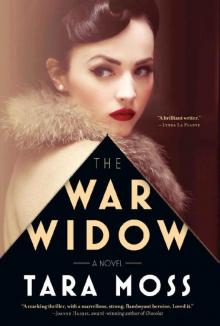 The War Widow
The War Widow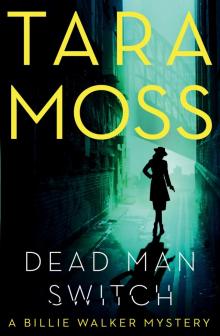 Dead Man Switch
Dead Man Switch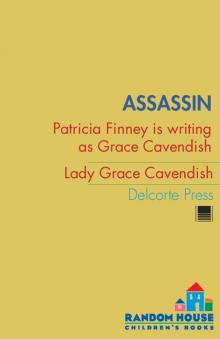 Assassin
Assassin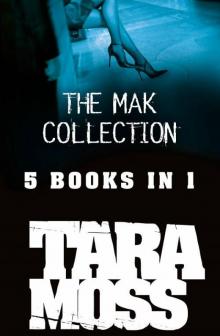 The Mak Collection
The Mak Collection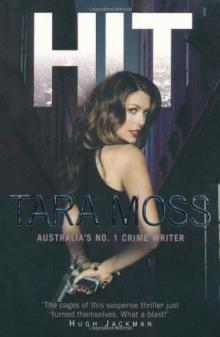 Hit
Hit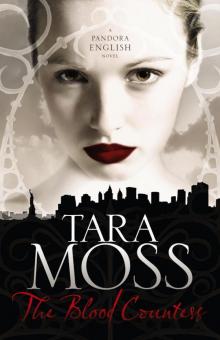 The Blood Countess
The Blood Countess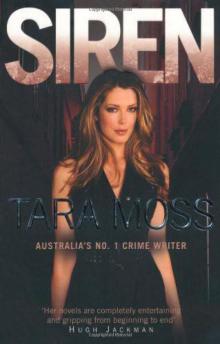 Siren
Siren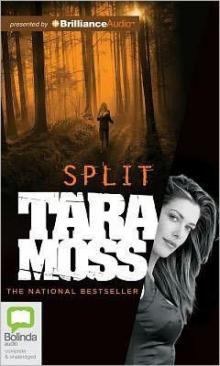 Split
Split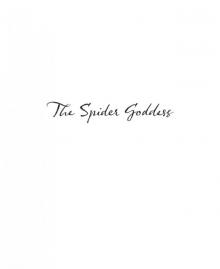 The Spider Goddess
The Spider Goddess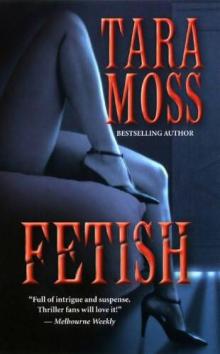 Fetish
Fetish The Skeleton Key
The Skeleton Key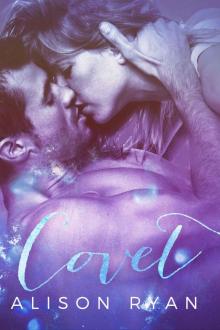 Covet
Covet